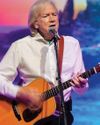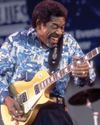
GT: What is it about instrumentals that appeals to you?
AS: The open-ended nature of instrumental music, its limitless colour palette, and technical possibilities are certainly appealing. I also feel that there’s some sort of special, unconscious language that’s only possible through instrumental music.
GT: What can an instrumental provide a listener that a vocal song can’t?
AS: I believe that instrumental music provides some unconscious form of communication, a sort of storytelling without words that’s not confined by interpretation. Maybe it’s a more direct form of communication!
GT: Any tendencies with instrumentals that you tend to embrace or avoid?
AS: The more tools one has in his/ her arsenal, the better, but there are certain things, technique-wise that I try to avoid. I suppose it just comes down to personal preference, and that ends up affecting one’s personal ‘style’ of playing. A particular example I can touch upon is trying to avoid articulation being unintentionally heavy-handed and sticking out awkwardly in the middle of any given phrase. I’m very particular about how I incorporate the notes that are picked versus articulated in a smoother fashion. The articulation and specific placement of those articulations really do play a big role in whether I feel a passage is effective or not. Expanding on that idea, time feel can suffer from misplaced articulation and limited dynamic sensibility.
GT: Is a typical song structure (intro, verse, chorus, etc), always relevant for an instrumental?
هذه القصة مأخوذة من طبعة January 2021 من Guitar Techniques.
ابدأ النسخة التجريبية المجانية من Magzter GOLD لمدة 7 أيام للوصول إلى آلاف القصص المتميزة المنسقة وأكثر من 9,000 مجلة وصحيفة.
بالفعل مشترك ? تسجيل الدخول
هذه القصة مأخوذة من طبعة January 2021 من Guitar Techniques.
ابدأ النسخة التجريبية المجانية من Magzter GOLD لمدة 7 أيام للوصول إلى آلاف القصص المتميزة المنسقة وأكثر من 9,000 مجلة وصحيفة.
بالفعل مشترك? تسجيل الدخول

THE MOODY BLUES
This month Stuart Ryan delves into the picking style of this British prog legend whose acoustic guitar has powered many a Moody Blues song.

WAYNE KRANTZ
This issue Nick Mellor provides an insight into this brilliant jazz stylist, focusing on his approach to improvising over static chords.

OPEN G TUNING
Open tunings are great fun and can help create exciting new ideas. Simon Barnard shows how to incorporate open G tuning into your playing.

RODRIGO GOUVEIA
Last month we featured Mateus Asato, and mentioned the importance of the neo-soul style in his playing. Here we turn to his fellow Brazilian, the master of neo-soul fusion.

MARK KNOPFLER
Our topic this month is a master craftsman as both guitar player and songwriter. His style is unique and his influence spreads far and wide.

U2
Martin Cooper checks out the chiming pedal delay tones of this stadium-filling band from Dublin, Ireland, and guitarist The Edge.

LUTHER ALLISON
It’s blues with a touch of soul this month, as David Gerrish explores the dynamic, expressive style of an often overlooked Chicago bluesman.

JOHANN KASPAR MERTZ Capriccio
This month Declan Zapala explores the music of Austria at the turn of the Romantic period with a fiery caprice to level up your fingers and unlock your inner virtuoso.

THE CROSSROADS Michael Landau
John Wheatcroft explores the playing of a session ace _ and blazing blues-rock maestro who graces the top-flight m band of singer-songwriting legend, James Taylor.

VIDEO MASTERCLASS Troy Redfern
This month GT welcomes this slide guitar virtuoso. If you've been wanting to take your slide playing to the next level then this is one's for you. With Jon Bishop.